Acidophilic Oak Forests
On the western slopes of Dúň Hill, below Gýmeš Castle, the green marked tourist trail crosses acidophilic oak forests, peculiar forest communities.
Note: The protected area Jelenská gaštanica may be closed in spring, when the chestnuts are harvested. In this case we recommend to return to station No. 5, to the crossing Pod gaštanicou, 344 MASL (5 min. walk) and to continue in a gentle rising following the red marking (0706) to the recreation centre Remitáž (40 min., 3 km), which is crossed by the Kostoľany Educational Trail as well (station No. 27). From station no. 6 we recommend as well to return following the green marking (5129) to Gýmeš Castle (station No.7). Do by no means try unmarked trails around the fence; the terrain in the upper part is impassable!
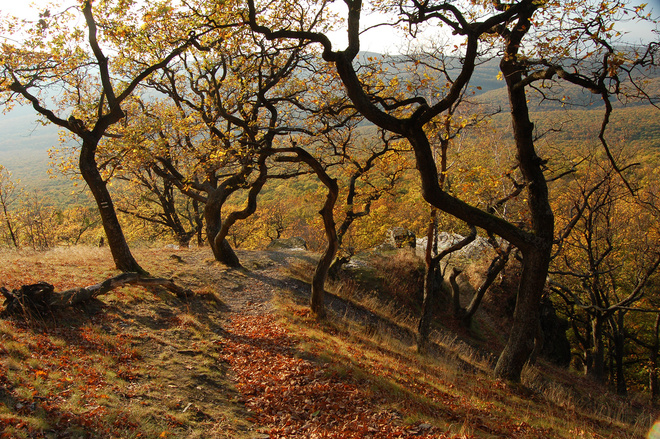
These are thin forests of low sessile oaks (Quercus petraea) with an average height of only about 3–8 m. Different knobbly trunks covered with lichens and interwoven branches create a bizarre almost fairy-tail image. Their appearance can be ascribed to extreme conditions, mainly to the thin soils, on which higher trees could not grow. The appearance of the oaks is even multiplied by bunches of the hemiparasitic European mistletoe (Loranthus europaeus), which is found mainly on older oaks. From the better known white common mistletoe it differs through deciduous leaves and its yellow fruits. The fruits ripen in winter and render the monotone winter forest more colourful. In addition, they attract birds, which spread them by their dung from branch to branch. In earlier times birdlime was brewed from their pulp to catch birds. European mistletoe is a thermophile plant and common only in the southern parts of Slovakia.
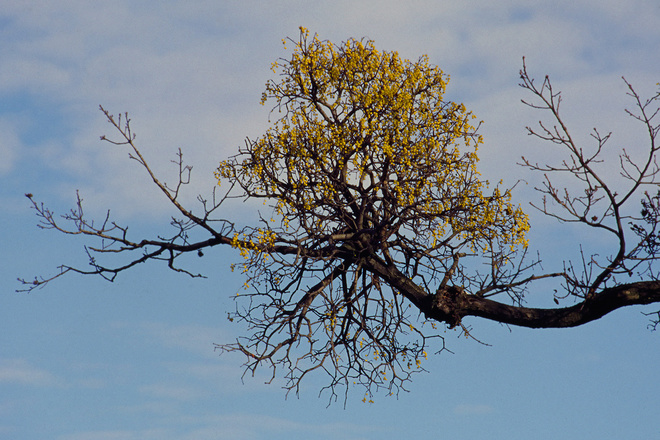
Acidophilic oak forests prefer thin soils with acidic reactions, with larger amounts of the framework, low in nutrition. Such substrates appear on hills with quartzite bedrock and are typical of the Tribeč Mountains. Apart from oaks, birches profit from these quartzite hills, among the rare shrubs we may mention for example the alder buckthorn (Frangula alnus) with its poisonous fruits. There are only a few grass species, among which the wavy hair-grass (Avenella flexuosa) predominates
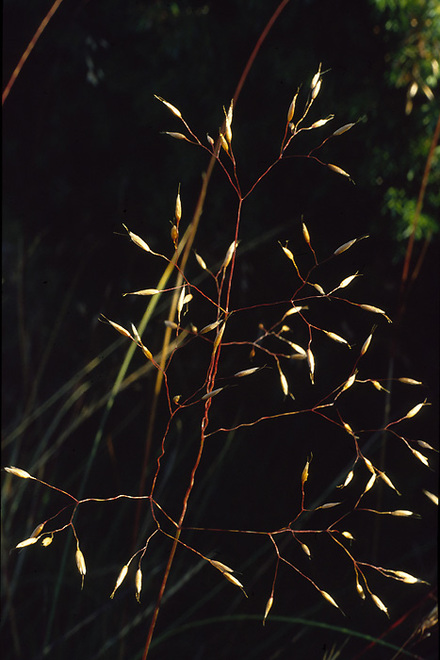
Only few other grass species appear sporadically within the wavy hair-grass; these are mostly indicators of acidic soils, as for example the sticky catchfly (Viscaria vulgaris), white wood-rush (Luzula luzuloides) or the hemiparasitic common cow-wheat (Melampyrum pratense). Continuous covers are at times formed by European blueberry (Vaccinium myrtillus), common heather (Calluna vulgaris) or common polypody (Polypodium vulgare), a fern with evergreen leaves. Larger surfaces can be covered also by mosses and lichens. The interior of the oak forest has a tidy appearance, as if it was a park.
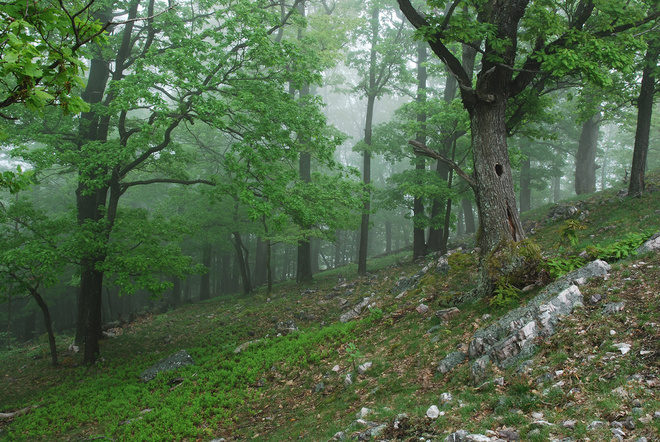
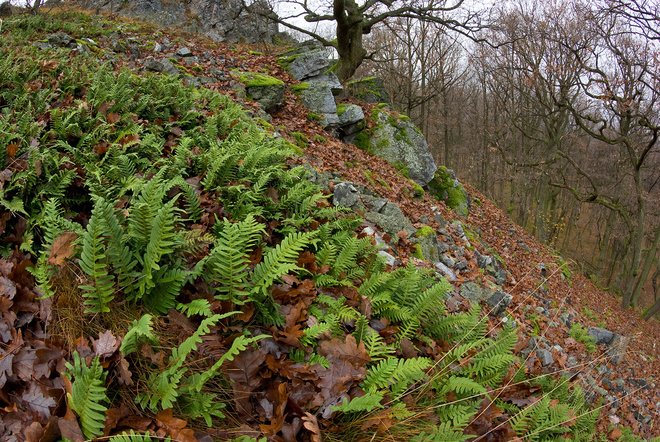
The acidophilic oak forests on the steep slopes of the quartzite rocks of the Tribeč are relatively well preserved from human influences. Their vegetation consists mainly of old individuals. Extreme conditions and aridity cause stress among the trees and therefore there are also many dried or dead trees.